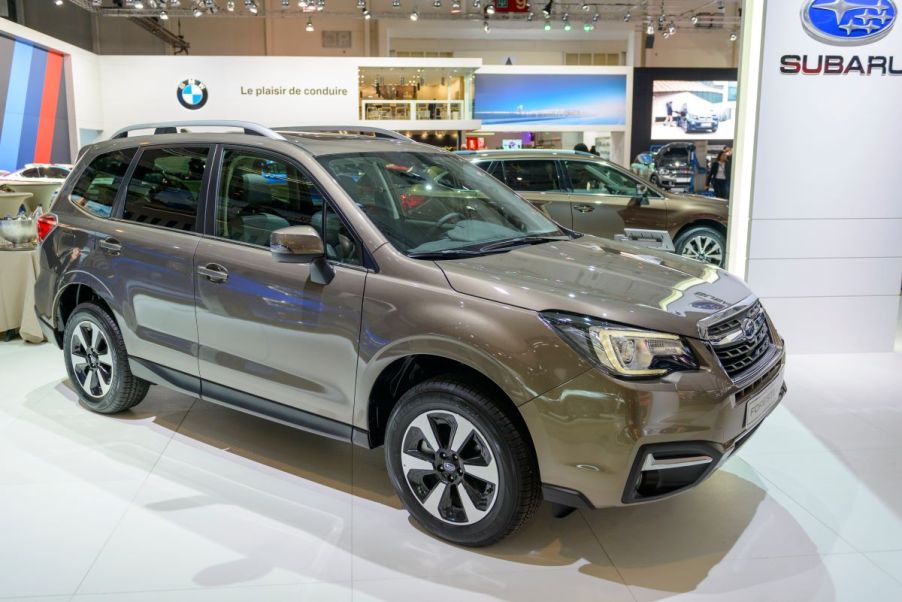
The Most Common Problems With the Subaru Outback You Should Know About
The Subaru Outback has a unique car design, making it a popular option. It can easily be described as an off-road station wagon with mid-size SUV features, including expanded interior space and storage. Besides being an excellent SUV alternative, it’s jam-packed with safety features and is well suited for family needs.
Nevertheless, learning about common problems affecting the Subaru Outback should come before deciding this vehicle may be right for you. This applies particularly if you’re buying a used model. Here’s a list of the typical issues that have plagued previous Subaru Outback vehicles on the market.
Weak windsheilds in the Subaru Outback

According to Top Class Actions, Subaru has been sued severally by buyers of their 2017-2019 vehicle offerings due to weak windshields. There are claims the windshields are prone to cracking and may happen spontaneously or due to contact with light debris. The 2017-2019 Subaru Outback has been a prominent feature in these lawsuits.
Damaged oxygen sensors
Damaged or cracked oxygen sensors causing the vehicle to run less efficiently are another common problem, especially with 2000-2003 Outbacks. These sensors trigger the engine check lights. However, the manufacturer has already recalled most of the Outbacks with this issue for sensor replacements.
Faulty airbag inflators
The 2010 Subaru Outback seems to be one of the models affected by the Takata airbags recall. These airbags are prone to exploding when deployed due to faulty and worn-out propellants. According to Subaru, this issue only affects the passenger-side front airbag. That said, you can drive to any Subaru retailer and fix the problem at no charge.
Headlight burning out on the Subaru Outback
Headlights typically last a long time and don’t need to be replaced often. However, the case is different for the 2011 Outback and is a significant reason for some of Subaru’s legal troubles. A few owners of the vehicle even report having to replace headlights bi-annually. With that many replacements, the overall cost of maintaining the car is likely to rise significantly over time.
Oil leaks
Oil leaks also feature prominently on the problems that outback owners complain about. Notably, this can also cause the vehicle to burn through oil faster than most other cars, which raises the cost of maintenance. For owners of the 2013 model, the culprit is usually a defective piston.
Some older Outbacks also leak oil due to camshaft and crankshaft seal failures, although this is localized to the 2000-2003 models. Worth noting is that sometimes solving the problem requires a complete engine rebuild that may be pretty expensive.
Cooling failures
Cooling system failure is one of two problems affecting consecutive model years of the Subaru Outback from 2000 onwards. Most of the Outbacks released between 2000 and 2018 could be affected. Typically, the issue will start with a broken thermostat, problems with the radiator, or even coolant leaks.
These seemingly minor issues often need to be fixed fast; otherwise, you’ll damage the head gasket and increase repair costs exponentially. Subaru is aware of the problem. It usually occurs at the 100,000 miles mark. As such, it has extended the warranty to match the timeline.
Transmission Prolblems with the Subaru Outback
Some models of the Outback, including the 2002 and 2004 versions, are likely to encounter transmission issues from time to time. As for the earlier model, faults with the transmission parking rods caused some vehicles to be recalled. Subaru explained that this would cause the cars to move even when the driver had selected the parking position.
The 2004 version, on the other hand, presented transmission issues like clutch damage and high-pitched noises. The high-pitched noises are often indicative of other problems with the transmission. Furthermore, clutch damage can be the starting point for transmission slippage, making it potentially dangerous on the road.
Vibration while accelerating
Lastly, buyers of Subaru Outback vehicles produced between 2000 and 2017 may have dealt with a vibrating car when they stepped on the gas. For most owners, this problem would arise after driving close to 110,000 miles with the vehicle. That said, a few may have experienced the same much earlier on.
The leading cause of the issue is yet to be accurately determined. However, some people believe transmission torque converter problems are responsible for the vibration.
Notably, even with all these problems for some model years, the Subaru Outback is still one of the most reliable cars available. If you take the vehicle’s maintenance seriously, it’ll likely last through more than 200,000 miles of use before needing significant repairs. However, you still may want to avoid one of the Outback years mentioned above for an easier time with your vehicle.


